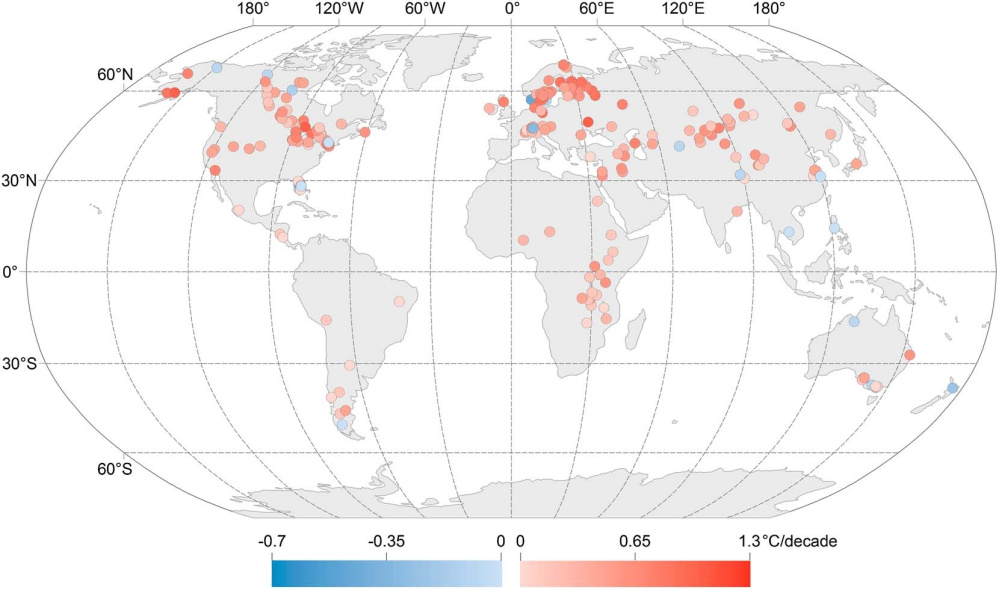DON’T GET ME wrong — I’m not sorry our driveway was not enclosed by 8-foot snowbanks this winter. The frequent presence of an ice-free walking route from the deck to the garage mitigated the claustrophobia — an infirmity of the brain related to cabin fever — that perennially haunts January and February afternoons. Was it my imagination, or did the sun not dip as low in the midday sky as usual?
Well, that had to be my imagination. But the effects felt here of the giant El Nino warming in the Pacific Ocean were not imaginary, and I have to tell you, much as I was glad of the general absence of snow, I have found it kind of unsettling and dreamlike at the same time. Kind of creepy, actually.
There have been February days in the past when the temperature reached 50 degrees, of course. But this year six days reached 50 or above, according to Accuweather records. Ten days hit 40 or above. In fact February’s average high temperature was 36, 5 degrees warmer than the average.
Why is my brain troubled by this? Part of it is what the world actually looks like, and part of it is the unsettling imagination of what it might look like in the, maybe, not too distant future.
Snowfall totals for February, if you can believe it, were not abnormally low. A National Weather Service map shows that most of Maine north and east of Bangor got from 5 to 10 inches, to as much as 20 inches of snow more than in the average February. Waldo County and central Maine got roughly the average, or just less.
The difference this February appears to be that the snow melted into air after it fell. So the driveway gravel spent a lot of days weirdly exposed to daylight. Not to mention the brook, which in the natural history of Troy is almost always obliterated by a plate of ice for months, but this year was seen boiling along most of the winter.
Snowless February woods are sort of like a scene in a vaguely disturbing dream. You keep going about your business, but the atmosphere of your mind keeps wondering what’s wrong with this picture, and what strange thing might happen next. You kind of feel like it could be anything.
And maybe it is: 2015 was the warmest year on record for Earth. Before that it was 2014. NOAA reports that the five warmest years out of the last 135 (i.e., since records have been kept) all occurred since 2005. Since 1998, 15 years have tied or set global heat records. The record for the warmest average ocean surface temperature was set in 2014.
In December, researchers studying satellite and other data reported that overall between 1985 and 2009, the surface temperature of Earth’s lakes warmed “significantly, with a mean trend of 0.34° Celsius per decade.” The report in Geophysical Research Letters — “Rapid and highly variable warming of lake surface waters around the globe,” authored by dozens of climate scientists — states moreover that: “In both the Laurentian Great Lakes region (of North America) and in Northern Europe, lakes were warming significantly faster than the global average.”
Whether Maine’s lakes were part of the warming is not specified in the report. But I found a raw data sheet of lake water temperatures made available by the Maine Department of Environmental Protection to see if I could get a reliable clue. I couldn’t, of course, because I’m not a climate scientist.
But my perusal, anyway, of surface temperatures recorded in mid-July and late August on Cobbossee Lake and Unity Pond showed in both cases fluctuations up and down, year by year with no huge departures between the early 1980s and 2014. But in the 2000s the temperatures for both seemed to be generally a bit higher — more toward the mid-20s Celsius — than the temperatures in the 1980s, which seemed to land more toward the lower 20s. No July or August temperatures during the 2000s dipped to the teens, whereas one August day in 1982 Cobbossee’s temperature at the surface was 17.2 degrees, and one August day in 1986 Unity Pond’s was 19.
Now, temperature data are not the stuff bad dreams are made on. Unless you start turning them over in your brain, which the scientists who made the global lake study did. After analyzing massive amounts of data, they concluded:
“The global average lake summer surface water warming rate found here implies a 20% increase in algal blooms and a 5% increase in toxic blooms over the next century … as well as a 4% increase in methane emissions from lakes during the next decade. Increased evaporation associated with warming can lead to declines in lake water level, with implications for water security, … substantial economic consequences, … and in some cases, complete ecosystem loss. … The widespread warming reported here suggests that large changes in Earth’s freshwater resources and their processes are not only imminent but already under way.”
To borrow an Irish novelist’s trope about history, this winter has been a weird dream from which, try as we might, we may not awake.
Maybe I’ll walk a turn or two around the snow-clear woods, to still my troubled mind.
Dana Wilde lives in Troy. You can contact him at naturalist1@dwildepress.net. Backyard Naturalist appears the second and fourth Thursdays each month.
Send questions/comments to the editors.




Success. Please wait for the page to reload. If the page does not reload within 5 seconds, please refresh the page.
Enter your email and password to access comments.
Hi, to comment on stories you must . This profile is in addition to your subscription and website login.
Already have a commenting profile? .
Invalid username/password.
Please check your email to confirm and complete your registration.
Only subscribers are eligible to post comments. Please subscribe or login first for digital access. Here’s why.
Use the form below to reset your password. When you've submitted your account email, we will send an email with a reset code.